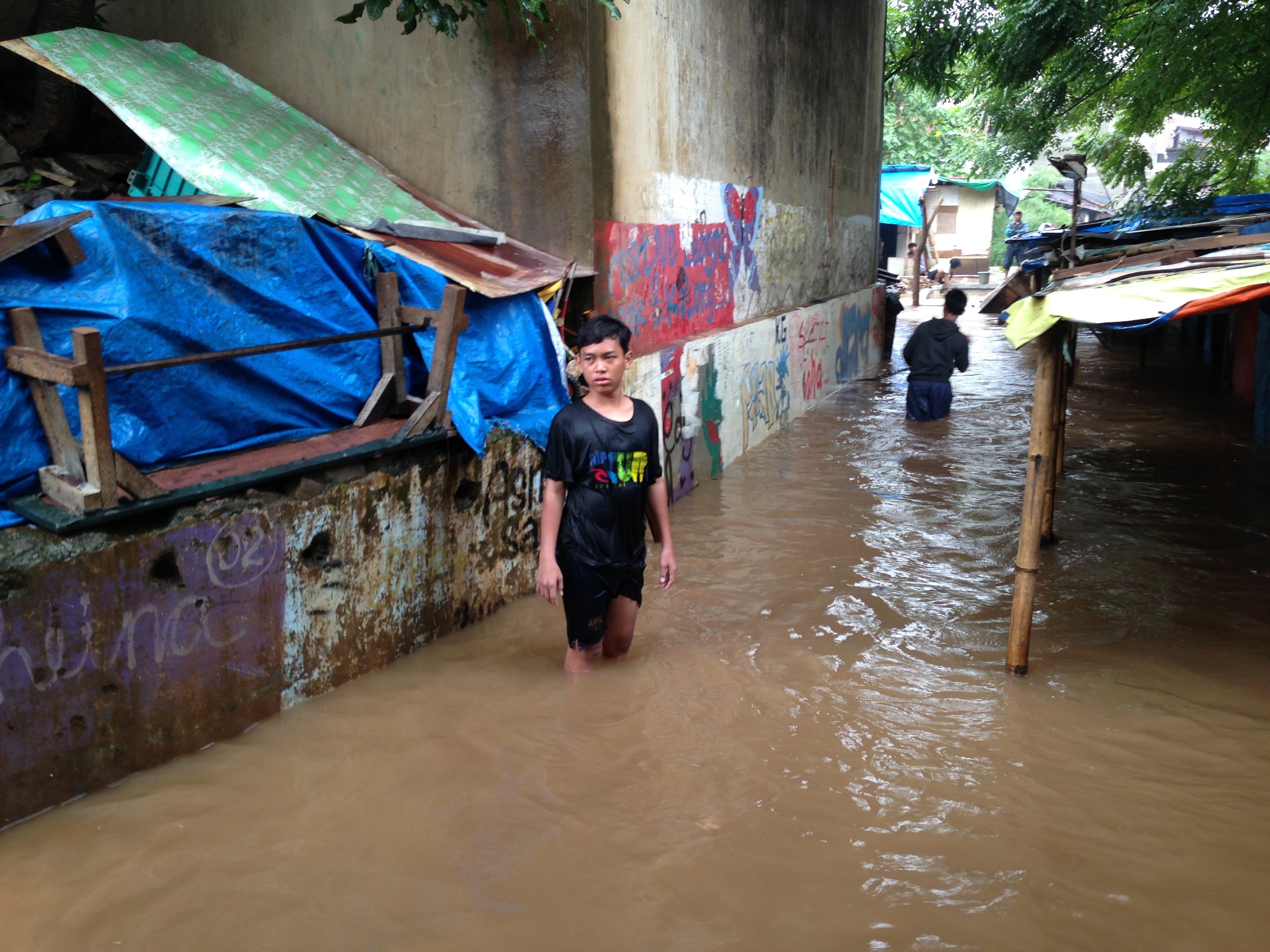The government’s efforts to reduce perennial flooding in Jakarta have been focused on building more floodways, but this does not address fundamental problems like environmental degradation, says Marco Kusumawijaya, an urban planning expert at the Jakarta-based Rujak Centre for Urban Studies.
“Infrastructure drains, but if you don’t reduce the amount of water [in] surface run-off, the capacity of the drains will always be overwhelmed,” he told IRIN.
“Because when you build drains you only solve the effects of water, but not the cause of the flooding… You have to reforest the upstream area in the south and create open space in the downstream area to absorb more water,” he added.
Kusumawijaya said, historically, every time a new floodway has been built, flooding occurred in the following years. “When you build more infrastructure, you build more buildings because you [mistakenly] think it’s OK because there are new drains,” he said.
Days of flooding in Jakarta peaked on 17 January, bringing the megacity of more than 10 million people to a near standstill and killing 20 people. More than 40,000 people were displaced, according to the National Disaster Management Agency. More than 100,000 people’s homes were under water. The national weather service has predicted continued rains until early February.
Heavy flooding in 2007 killed 57 people and displaced more than 420,000 in Jakarta. The authorities put the total damage that year at nearly US$695 million.
Jakarta is surrounded by mountains the slopes of which form the upstream catchment areas of 13 major rivers that flow through the city to the Java Sea. An estimated 40 percent of the city lies below sea level - made worse by land subsidence resulting from groundwater extraction, say experts.
Government action
Mohammad Hasan, director-general of water resources at the Public Works Ministry, said the completion in 2011 of a new spillway in East Jakarta reduced flooding in some parts of the city, but that it will still take years before flooding can be more effectively controlled city-wide.
“In Jakarta there were about 78 flood-prone pockets, but they have been reduced thanks to the repairs of the West Flood Canal and the construction of the East Flood Canal. We will start work on normalizing several rivers and repairing sluices and dykes,” he said.
“The government’s flood management does not only involve building infrastructure, but also campaigning on proper waste disposal and the use of infiltration wells [wells to drain rainwater into the ground] as well as [increasing] the role of communities [in flood control],” he told local TV on 22 January.
Indonesian President Susilo Bambang Yudhoyono has urged Jakarta Governor Joko Widodo to relocate residents living in shanty towns along the banks of the River Ciliwung who are often blamed for clogging waterways with household waste.
The government has pledged to construct a 1.5km underground water canal connecting the River Ciliwung with the East Flood Canal at the cost of US$73 million.
World Bank project
Work on a $189 million World Bank-funded project to dredge and rehabilitate floodways, canals and retention basins is expected to start in March, its team leader, Fook Chuan Eng, told local media.
The first two years’ work involves dredging 67.5km of key channel systems and four retention basins, as well as repairing 42km of embankments, the report said.
Eng said around 57 residential areas in Jakarta - inhabited by 1.8 million people living near project sites - will experience less flooding after the project’s completion.
Kusumawijaya of the Centre for Urban Studies said Indonesia can be an example for other low-lying megacities if it can better manage its water. “This is not a unique Jakarta problem, but a problem in developing countries that are prioritizing growth,” he said.
ap/pt/cb
This article was produced by IRIN News while it was part of the United Nations Office for the Coordination of Humanitarian Affairs. Please send queries on copyright or liability to the UN. For more information: https://shop.un.org/rights-permissions




